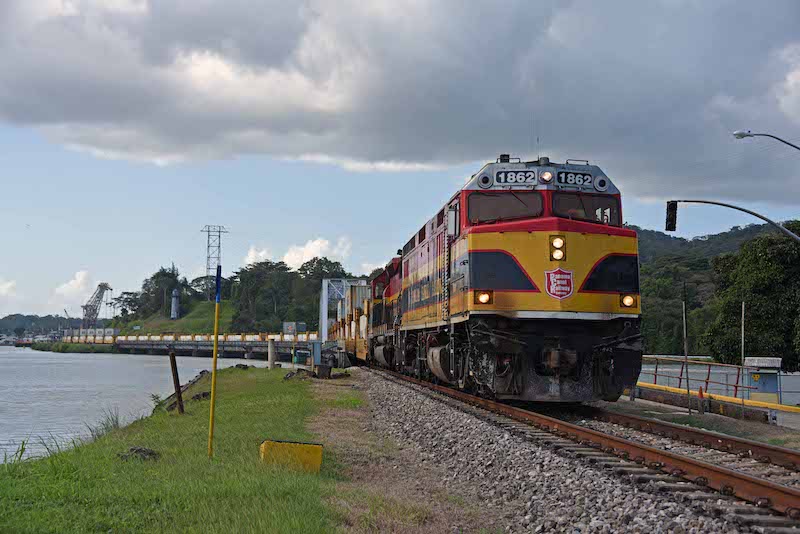By M.T. Burkhart
In an advisory to its customers, shipping giant Maersk said it will use trains to avoid the drought-plagued Panama Canal for some of its container traffic.
The Canal Authority recently reduced the number and weight of vessels that can pass through the canal based on current and projected water levels in Gatun Lake, the rainfall-fed principal reservoir that floats ships through the canal’s lock system, Maersk said. That means some containers will be transported across the isthmus by the Panama Canal Railway.
“Reflecting on the ongoing water situation in the Panama Canal, and the possible impacts on cargo movements, we wanted to inform you of changes to services, as well as what Maersk is doing to mitigate the situation,” the firm said in an advisory to its customers. “Based on current and projected water levels in Gatun Lake, the Panama Canal Authority (ACP) has needed to make reductions to the amount and weight of vessels that can pass through the canal.”
The Panama Canal Railway connects Atlantic and Pacific ports and runs across the isthmus between Balboa (near Panama City) and Colón. Panama has a long railroad history, with the inter-ocean line connecting the Atlantic and Pacific opened in 1855. The original trackage was partially relocated when the canal was built and played a significant role in the construction from 1904 until the canal opened in 1914. Closed for a time, the railroad reopened in 2000 and is jointly operated by Kansas City Southern and Mi-Jack Products.


